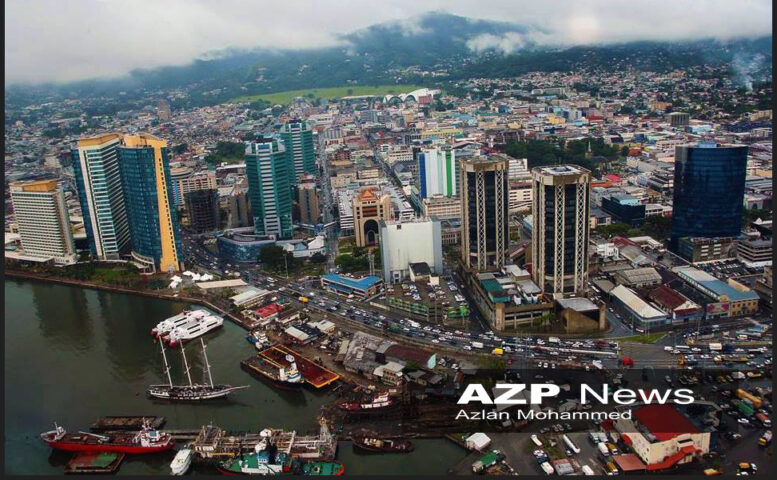
PORT-of-Spain (Puerto d’Espana and Puerto de los Hispanioles till 1797) is located on the west coast of the island of Trinidad in the Caribbean.
The island was initially claimed by Spain and the city soon developed as a port city as Spanish ships landed there from 1498 to the mid-18th century. In 1784 Port of Spain became the capital of Trinidad and almost a decade later the British captured Trinidad from the Spanish.
During the early decades of the 19th century, Port of Spain underwent a major transformation. A great fire on March 24, 1808, forced Governor Ralph Woodford to construct new buildings.
A new Anglican Church—Trinity Cathedral, was built in 1823. In 1838, the Presbyterian Church of Grey Friars was constructed and the Anglicans benefited from the All Saints’ Church founded in 1844.
In 1831, Britain allowed the establishment of a Legislative Council in Port of Spain. This institution allowed the Trinidad government to possess political powers.
The majority of members of the Legislative Council were White and belonged to the upper class and of the urban gentry.
The fertility of the soil and agricultural potential of the land was evident from the large sugar estates within the city including the Tranquillity and Woodbrook Estates.
The Town Council of Port of Spain and the Cabildo of the Town of Port of Spain were
later changed to the Port of Spain Borough Council and dealt with such issues as the
provision of electricity, water and sewage.
The lighthouse on the waterfront of the city was built in 1842 and though no longer used, serves as an important landmark.

After slavery ended in 1838, planters searched for alternative forms of labour on the estates. This led to the influx of ethnic groups as the Chinese, Syrians and Portuguese.
One of the earliest government secondary schools in the city was the Queen’s Collegiate (1859) and The Royal College of Trinidad in 1870 which were merged and
renamed as Queen’s Royal College.
Additionally, there were denominational schools as St Joseph’s Convent (1836) and St. Mary’s College (1863).
By the 1880s, the city population had expanded to 32,000 inhabitants. The residents benefited from the opening of the first railway in August 1876 which connected Port of Spain to other smaller towns.

The use of the mule tram service, electric tram and telephones attracted business in the city.
At the outbreak of World War One, 450 men were selected to form a Trinidad
contingent. They were trained in Port of Spain in the St James barracks and Prince’s
Building.
From the 1920s, Woodford Square, situated opposite the parliament, was a meeting place for politicians, religious groups and trade unionists. During the 1950s to 1970s, the square’s status was transformed into the University of Woodford Square in which the working class received an informal education.
There was a vibrant United States presence in the city during World War Two. The Americans built air raid shelters in the city and a naval military base in Chaguaramas. By the 1950s, Port of Spain was Trinidad’s financial and business centre.
In 2004, the population of Port of Spain was 50,600 persons.
Dr Jerome Teelucksingh is an activist. He initiated the inaugural observances of International Day for the Elimination of Violence Against Men and Boys (January 31) and World Day of the Boy Child (May 16). He has made academic presentations at tertiary institutions including Harvard University and Oxford University.
See other articles by Dr Jerome Teelucksingh on AZP News:
Have we Forgotten George Padmore
Nobody Cares about Underachievement
Can we Eradicate Underachievement?
A Quiet Pandemic: Male Underachievement
The Blackest Thing in Slavery wasn’t Slaves
The Importance of Emancipation Day
Tobago’s Working Class in the 1920s, 1930s
Are Humble Caring Fathers Champions?
Influencing West Indian Masculinity
Defining Caribbean Masculinity
Is Monogamy Encouraged in the Caribbean
Naps Girls: From Humble Beginnings to Excellence
US Media Creates Cultural Dependency in the Caribbean
Bloodless Revolution to Save Lives in Developing Countries
The Need for a Social and Moral Revolution
The Law of Supply and Demand in Developing Countries
End the Dependency for Developing Countries
T&T Carnival and the Emperor’s New Clothes
The Influence of Labour on Caribbean Integration
The illusion of political Unity
Presbyterians in Trinidad: Humble Missionaries, Local Workers
Religious Plurality: Curse or Blessing
Caribbean Youth Need Optimism, Patriotism
Rethinking Identities in Caribbean, Latin America
November 19: All Inclusive International Men’s Day
Should International Agencies be Blamed for Unemployment
A Need to Observe Word Unemployment Day
An Ideology for the Trade Union Movement
The Man who Couldn’t be Prime Minister
Social Outburst vs Social Revolution
Challenges of the Men’s Movement
If George Floyd was Denied Parole
The Meaning of Indian Arrival Day in T&T
International Men’s Day – A Way of Life
Wounds that cause school violence
May Day: A Time for Solidarity, Strength
Who Coined the Term ‘Black Power’
The illusion of political Unity
Presbyterians in Trinidad: Humble Missionaries, Local Workers
Religious Plurality: Curse or Blessing
Caribbean Youth Need Optimism, Patriotism
Rethinking Identities in Caribbean, Latin America
November 19: All Inclusive International Men’s Day
Should International Agencies be Blamed for Unemployment
A Need to Observe Word Unemployment Day
An Ideology for the Trade Union Movement
The Man who Couldn’t be Prime Minister
Social Outburst vs Social Revolution
Challenges of the Men’s Movement
If George Floyd was Denied Parole
The Meaning of Indian Arrival Day in T&T
International Men’s Day – A Way of Life
Wounds that cause school violence
May Day: A Time for Solidarity, Strength
Who Coined the Term ‘Black Power’
![]()













